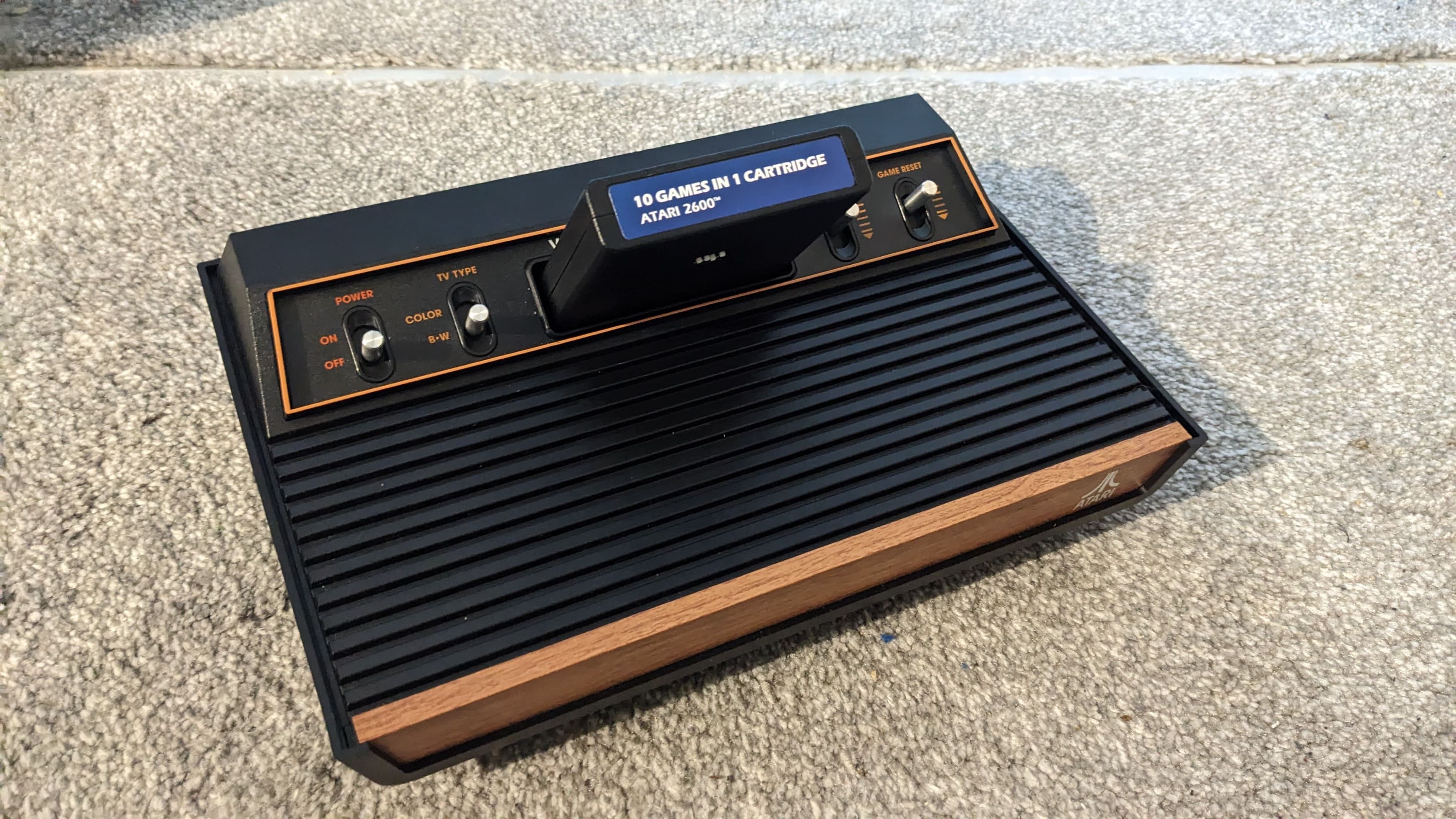
At just 80% the size of the original unit, you could be fooled into thinking the new Atari 2600+ was yet another one of those mini game consoles. You know the sort, the one that proved very popular five or six years ago when companies like PlayStation and Nintendo shrunk down their famous systems, packed in 10 or so games, and called it a day. (In fact, read our best retro game consoles guide for more.)
In actual fact, Atari's take on the idea is gloriously analogue by comparison. Not just because it's a console capable of playing original 2600 – and, as a nice bonus, 7800 – game cartridges, but also as it's impeccably authentic from a design perspective.
Though the games themselves might be considered a tad archaic by today's standards, the Atari 2600+ still functions expertly as a throwback to one of home console gaming's earliest generations. And what could have been a quick and cheap cash grab has actually had plenty of thought put into it, sure to be appreciated by both owners of the 1977 original and modern players wanting to school themselves up on an important part of video game history.
In this Atari 2600+ review I'll be looking at everything, included out of the box, how well the accessories and unit itself have been replicated, as well as the emulation performance because, yes, this does indeed rely on emulation. That said, as far as cartridge-based mini consoles go, the Atari 2600+ is sure to delight.
Atari 2600+ review: What's in the box
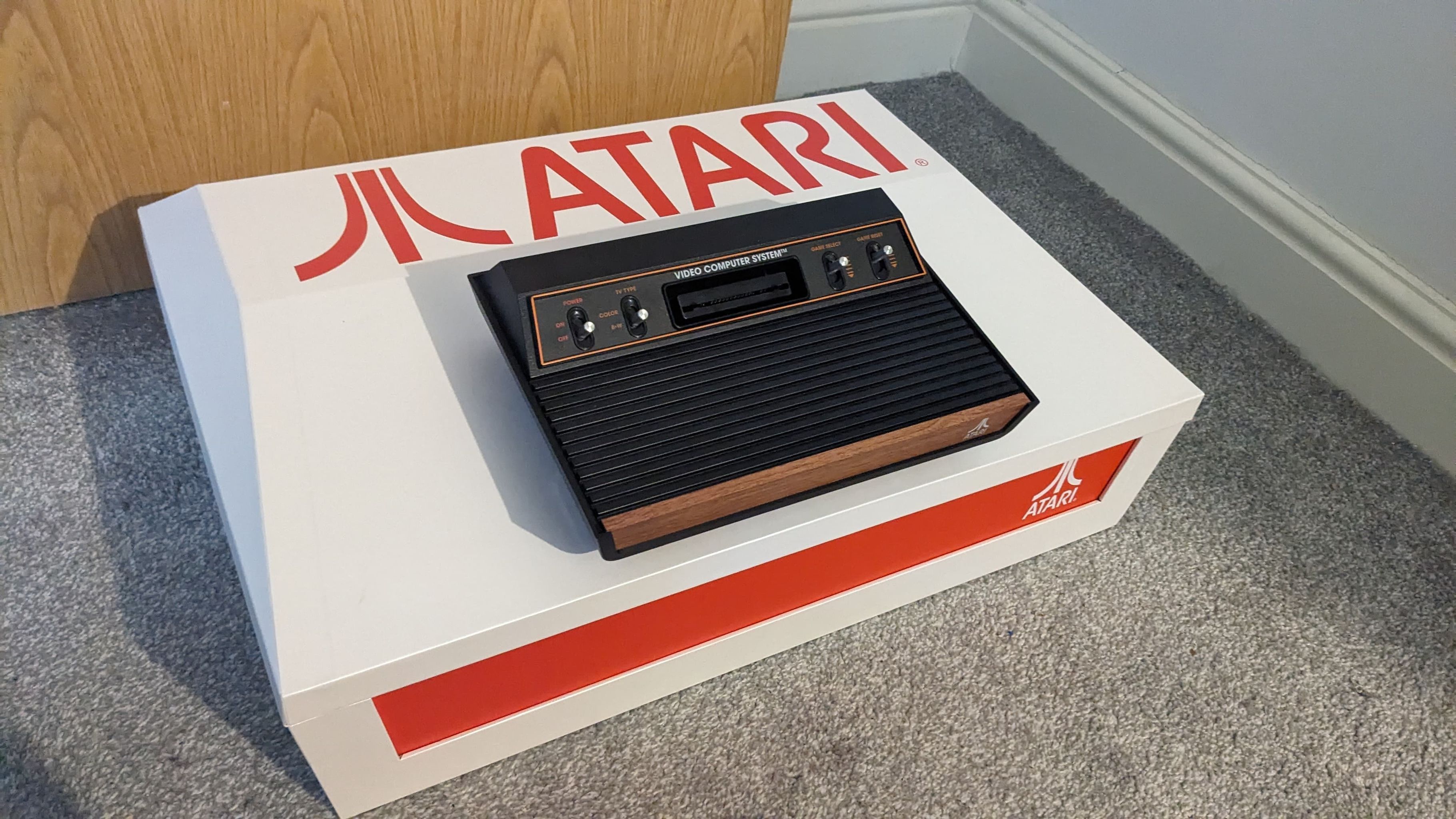
For $129.99 / £99.99 right out of the box, you get everything you need to get started with the Atari 2600+. This includes the shrunken-down console unit itself, a classic CX40 Joystick designed to work with most games, all the necessary cables (HDMI and a USB-C for power), and finally a unique 10-in-1 multi-game cartridge. It's worth noting that the USB-C cable doesn't come with a mains plug attachment, so you'll need to use an existing one or plug direct into your TV or monitor for power.
Sadly, as I was sent a press unit for this review, our box is certainly slightly different to the one you'll received. For what it's worth, however, our Atari 2600+ came neatly packed within a sleekly presented box, opting for a clean white look and quote that pays homage to the original console's origins, as well as the idea of 'an icon returning' in line with the mini console's marketing.
Unlike when the first Atari 2600 released there's no manual included in the box. Rather, you'll be greeted with a sheet of card featuring a QR code that directs you to a microsite Atari has designed to get you set up. Admittedly, doing so is as simple as plugging the unit in and flipping on the oh-so tactile Power switch, where you're greeted with an Atari logo and the fun can begin.
Atari 2600+ review: Design and Build
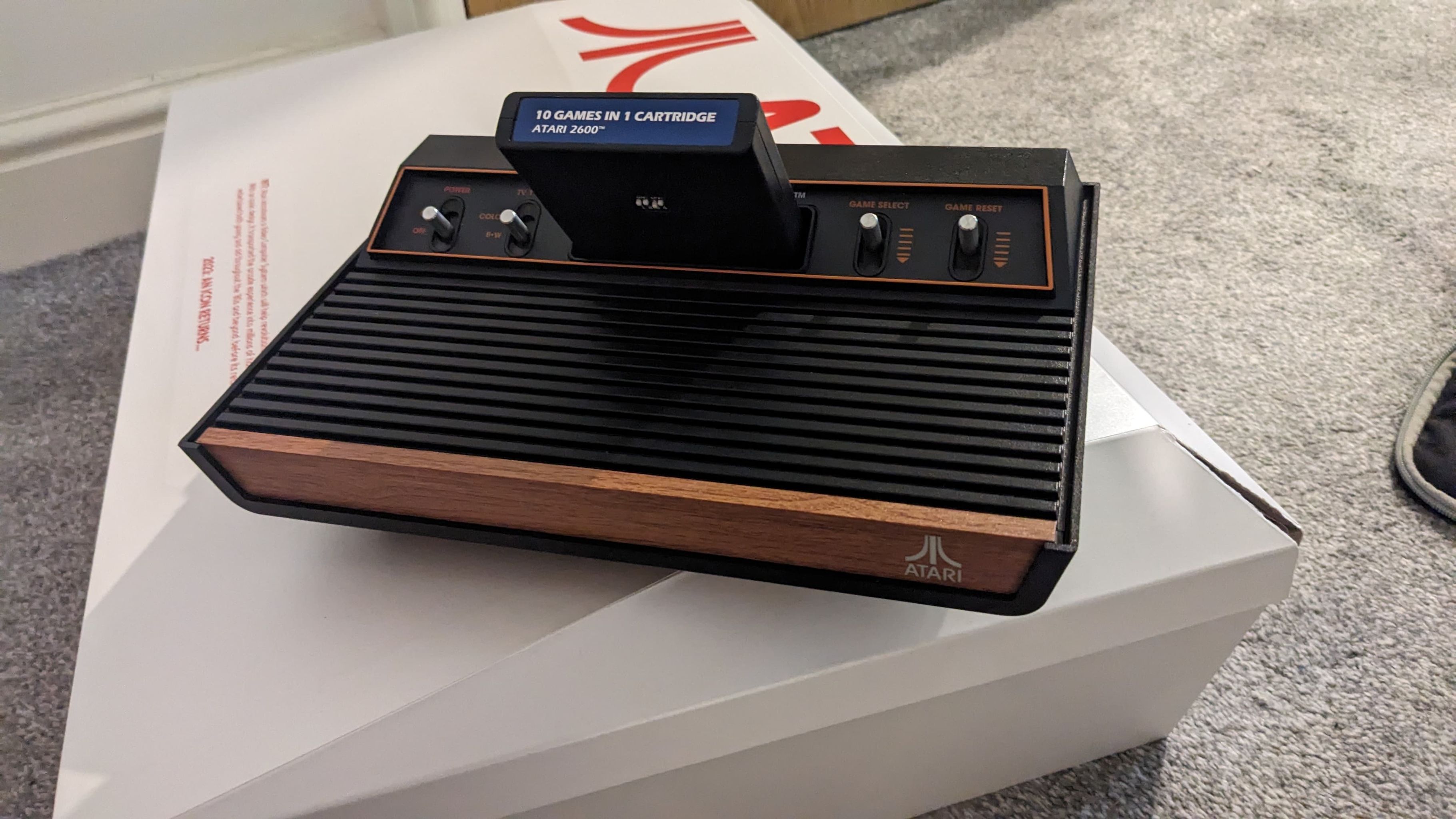
The Atari 2600+ is incredibly faithful in terms of its design to the woodgrain panel four-switch VCS model that initially released in 1980. Opting for this model rather than any other helps prevent the unit from having too many knobs and switchers located along the top, keeping it to just Power, Colour Type, Game Select and Game Reset. Flicking and switch each of them all feels satisfying in that tangible way you rarely see in today’s consoles.
Constructed mostly in black plastic, aside from the woodgrain veneer and metal switchers, the shrunken-down machine comes in at 10.63" x 7.09" x 2.76" – a roughly 20% size reduction compared to the original. Despite this, the Atari 2600+ is equally as light, even if it means that the cartridge slot itself will appear oversized to anyone familiar with the genuine article – it still needs to fit and play original Atari 2600 and 7800 cartridges, after all.
Moving onto the CX40 Joystick, and feels a tad rigid compared to the analogue sticks of today. Some players might find this an irk in classic titles like Pacman and Maze Craze where precision is key, but it is rightfully authentic to the experience players would have had in 1977. The big red button does have a satisfying click to it, at least, offering a good degree of feedback in shooting games like Bezerk and Asteroids. The same can be said for the paddle controllers' rotating action which is joyfully smooth, though this is sold separately (with a distinct 4-in-1 cartridge) unless you have them lying around.
Atari 2600+ review: Performance
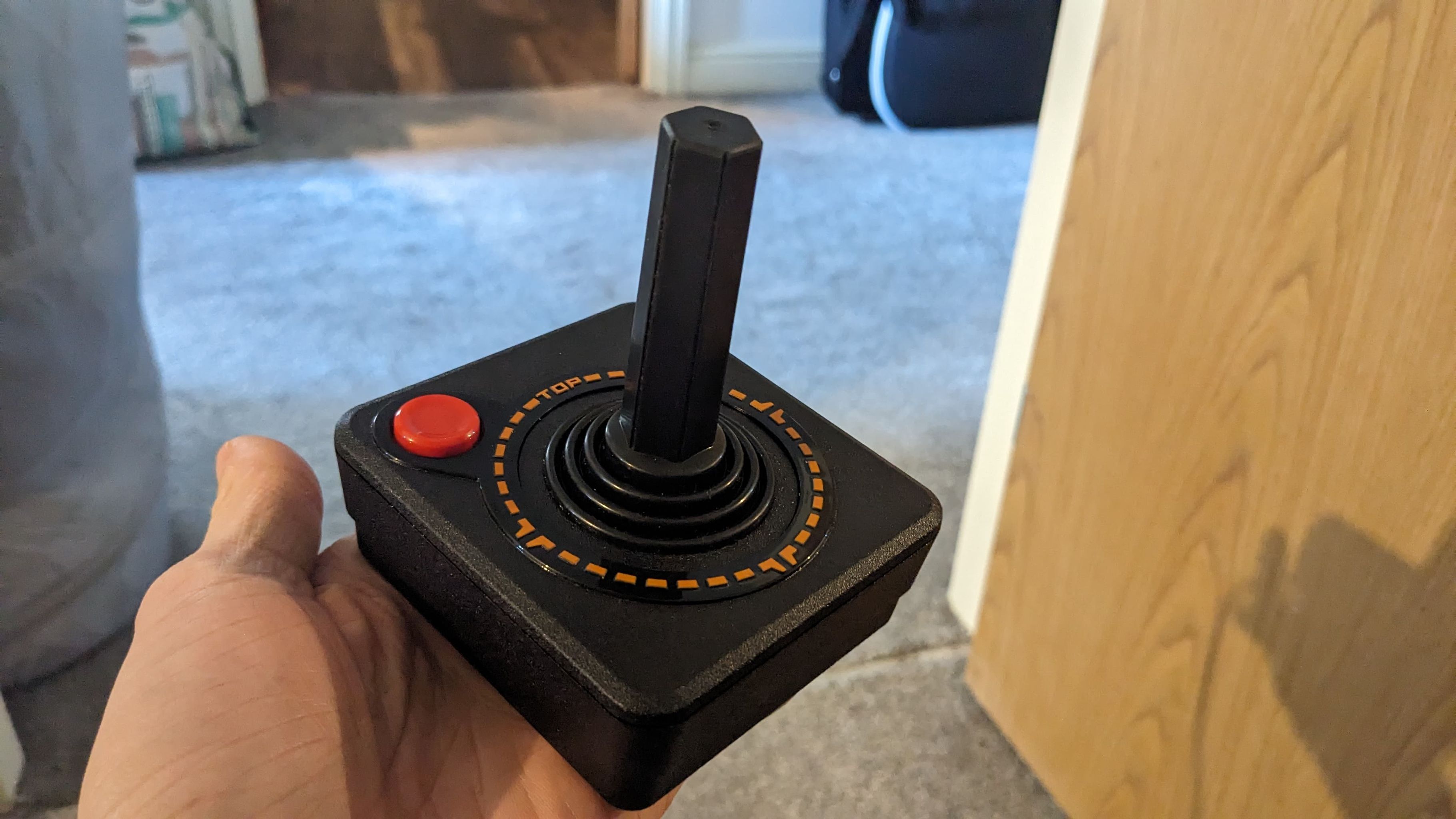
Unlike other retro console manufacturers like Pocket Analogue, which have had great success using FGPA technology to make the unit think it's the original hardware (helping to stamp out latency for good), the Atari 2600+ still applies a form of emulation despite the emphasis on tactility.
It's a little disappointing to know that, in reality, the replica is merely recognising any physical game cartridge you put in and then loading up a file, as opposed to actually reading them. That said, the sensation is almost identical and we barely noticed any delay.
Of course, there being a USB-C slot included does open up the potential for Atari to include support for any future-developed 2600 and 7800 games. Mr. Run and Jump, being a totally new title made for the hardware and available as a separate purchase, is a sign that there's at least some community interest.
How far such demand for all-new 8-bit Atari games will go, however, remains to be seen. The good news is that of the some 450 or so 2600 titles currently in existence, most are compatible with the Atari 2600+ – and the 25 we were able to test performed flawlessly.
Atari 2600+ review: the games
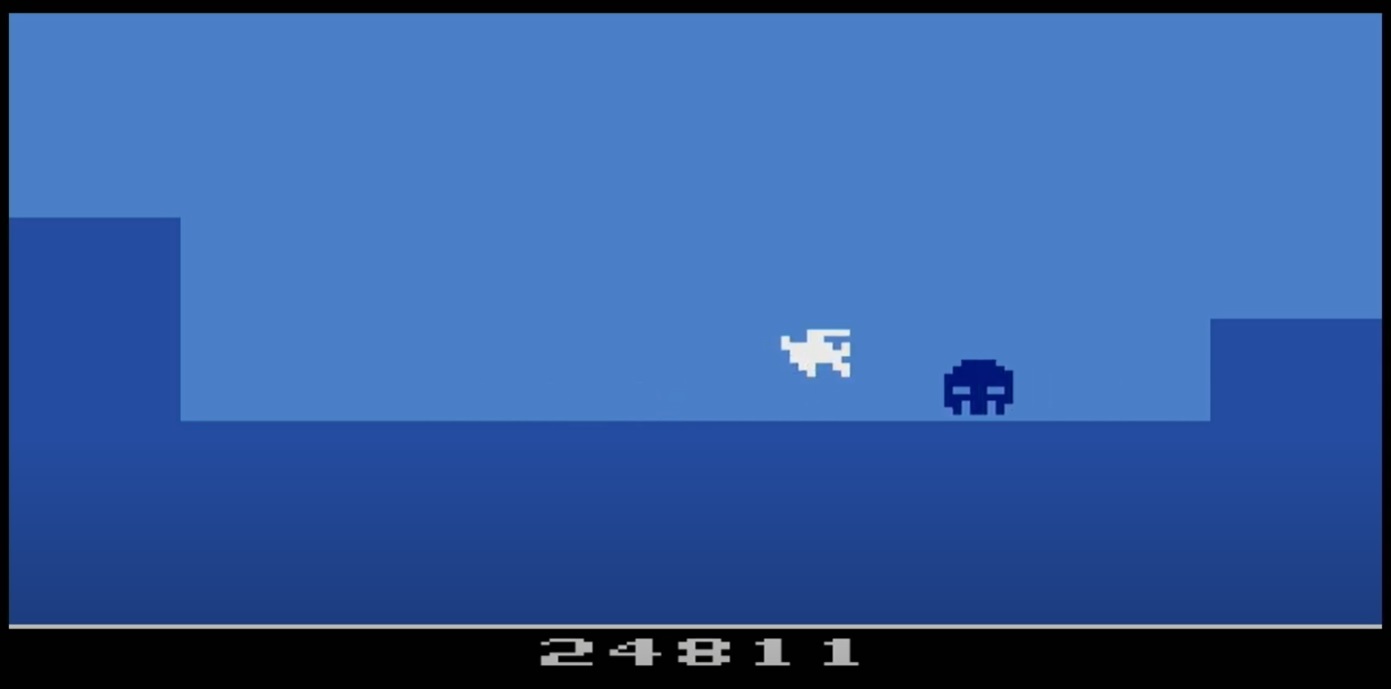
Although there are technically no games that come with the Atari 2600+ built in, the 10-in-1 multi-game cartridge included spans a good degree of the console's library (some of the best video games of the 1980s). Adventure, Missile Command, Combat and Yars’ Revenge might all be considered rather quaint now, but seeing them presented in widescreen does lend them a sense of freshness you'd never get if you were to buy an original console and hook it up to a CRT today. Plus, switching between titles using the little nubs on the back of the cartridge to set a different pattern works well, and can even be done mid-game.
Obviously, the major boon to the Atari 2600+ is the ability to play original cartridges. It ends up being both a joy and a curse, though, because unless you're willing to track down and then pay for the most obscure, this replica unit that won't really help you. Fortunately, Atari is selling newly made versions of Beserk, Breakout and Video Olympics – alongside totally fresh games like the aforementioned Mr. Run and Jump – separately, so there's plenty to get you started. Just bear in mind these won’t come in full-size boxes and don't include manuals; the fat has very much been trimmed.
Atari 2600+ review: should I buy one?
There's no denying the fact that the Atari 2600+ is an incredibly well-made homage to the era in which it was born. The unit itself looks great despite its reduced size, the games themselves play mostly flawlessly, and it's much easier to set up than if you were to bring down your original Atari 2600 down from the attic. Whether you should buy it though depends on your familiarity with the console, as we can’t see many modern players enjoying these 8-bit games outside of the sheer novelty.
The route of emulation is also a bit of an issue too given how, at least on the surface, the Atari 2600+ wants to be a champion of all things analogue. If you're a child of the 70s or 80s wanting a way to replay your old stack of Atari games in widescreen HD with ease, this is a no-brainer purchase.
For everyone else, however, it'll be a cool way to access an interesting period of video game history, even if it won’t be able to hold your attention for long. Even so, as a homage to Atari's most classic home console, it's hard to imagine a much better way to play.
The Atari 2600+ is out now, exclusive to Amazon or you can buy it through the official Atari website.







